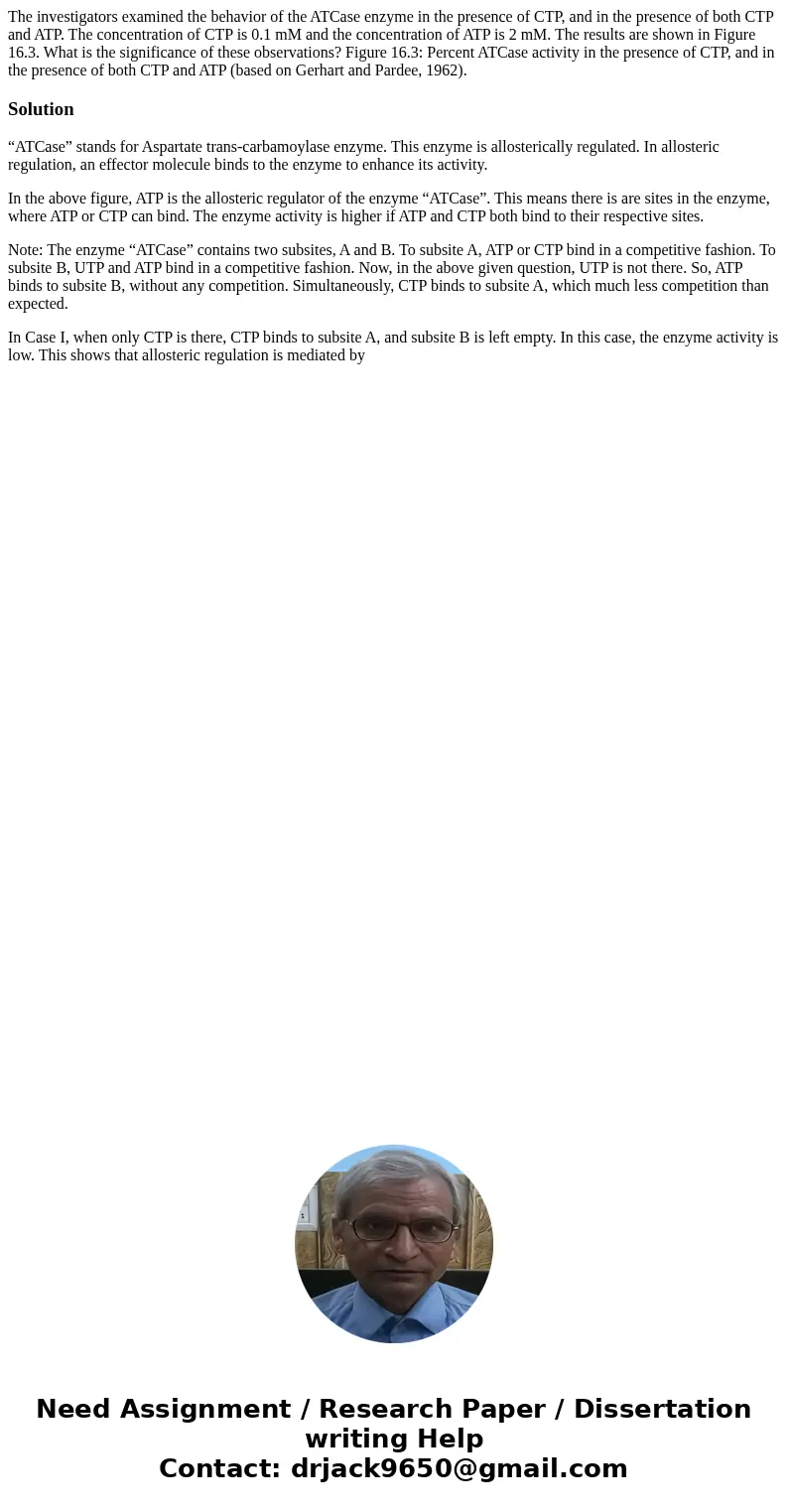The investigators examined the behavior of the ATCase enzyme
Solution
“ATCase” stands for Aspartate trans-carbamoylase enzyme. This enzyme is allosterically regulated. In allosteric regulation, an effector molecule binds to the enzyme to enhance its activity.
In the above figure, ATP is the allosteric regulator of the enzyme “ATCase”. This means there is are sites in the enzyme, where ATP or CTP can bind. The enzyme activity is higher if ATP and CTP both bind to their respective sites.
Note: The enzyme “ATCase” contains two subsites, A and B. To subsite A, ATP or CTP bind in a competitive fashion. To subsite B, UTP and ATP bind in a competitive fashion. Now, in the above given question, UTP is not there. So, ATP binds to subsite B, without any competition. Simultaneously, CTP binds to subsite A, which much less competition than expected.
In Case I, when only CTP is there, CTP binds to subsite A, and subsite B is left empty. In this case, the enzyme activity is low. This shows that allosteric regulation is mediated by

 Homework Sourse
Homework Sourse